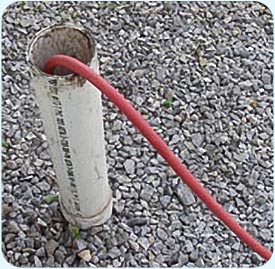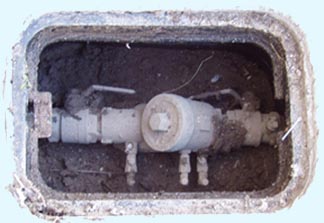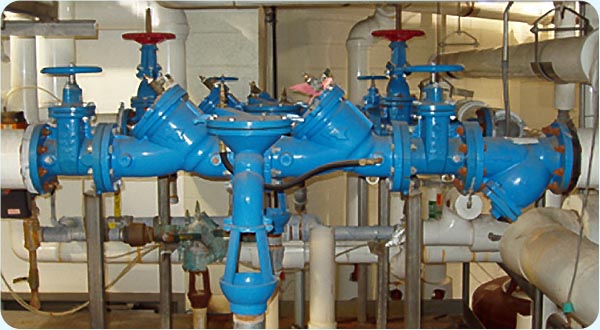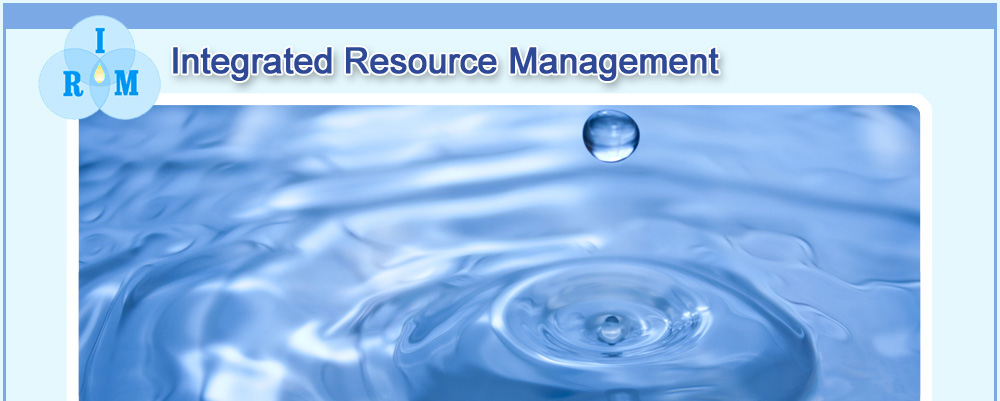|
What is Backflow?
Backflow is a general concept as simple as the name implies: water flowing back in the direction opposite the one intended. Water flow is determined by natural or artificial pressure through a particular water system.
A properly engineered system is designed to maintain that pressure through its myriad pipes and connections. Also, variations in usage patterns require constant management of the water system (for instance, the morning surge in a system when everyone turns on their showers).
Nevertheless, incidents can occur that are beyond the control of water system managers. A sudden flow of water out of a system—possibly due to a break in a water main or the unauthorized opening of a fire hydrant—can cause water farther along in the pipes to be sucked backward, or backsiphoned, into the system. Also, an overactive pump can push, or backpressure,water backward through the public water supply.
Backflow by itself is not a danger, but when combined with a cross-connection it can be deadly.
|
|
What is a Cross-Connection?
Cross-connection, like backflow, is a descriptive term: a connection that crosses between clean and unclean or contaminated water. While there have been incidents when wastewater was piped directly into a freshwater system, most cross-connections occur when an intake water pipe is merely in contact with the site of water usage—a fertilizer spray nozzle attached to a garden hose, or a faucet submerged in a full sink.
|

A potential backflow incident could
occur at this cross-connection.
|
If a backflow incident occurs while even these incidental and seemingly innocent cross-connections are in place, then it is possible that harmful and even lethal chemicals will be sucked back into the water system, injuring an employee or ending up in your products.
Imagine the chemicals and by-products produced or used by your facility being fed back into the local water main, or into your own internal water system. Imagine the harm to your facility’s image in the community, let alone the physical danger to your employees, customers and neighbors. It is no wonder, then, that multiple regulatory agencies and industrial trade groups strongly advise industrial facilities to adopt internal, comprehensive Cross-Connection Control Programs.
|
Why do I need a Cross-Connection Control Program?
Cross-connection control (CCC) is regulated by federal, state and local government agencies, but enforcement is almost always left to local officials. Most municipalities already have or soon will have an ordinance-mandated CCC Program for your local water system. These programs require commercial or industrial facilities to be surveyed for potential cross-connections and proper installation as well as testing of backflow prevention devices.
|
However, according to the United States Environmental Protection Agency in 2002, “Program requirements vary widely between states” and may consist of “various regulations, including the drinking water regulations, health code, plumbing code, policy decision of the utility itself and building codes. A 1993 U.S. General Accounting Office report on the review of 200 sanitary surveys and a nationwide questionnaire of states identified inadequate cross-connection control programs as the most common deficiency.”
|

This backflow prevention device is below
grade and could result in a fine.
|
Some municipal programs are satisfied if a facility merely has a properly functioning device where water enters the facility—these are called “containment” or “service protection” programs. Other programs, known as “last free-flowing outlet” programs, have additional requirements for internal water system connections. Beyond municipal regulations, many trade groups and professional associations demand that corporate members or certified facilities institute cross- connection and backflow prevention regimes for industrial facilities that exceed regulatory requirements.
|

A reduced pressure principle (RP) backflow prevention device. |
Whether a facility is regulated by one of these types of municipal programs—or no program at all!—it is always the responsibility of the water consumer to install, test and maintain backflow prevention devices, as well as to guard against unnecessary and potentially dangerous cross-connections in its water system. An internal, facility-specific, industrial CCC Program ensures consistent compliance with municipal and industrial regulatory standards.
|
|



















